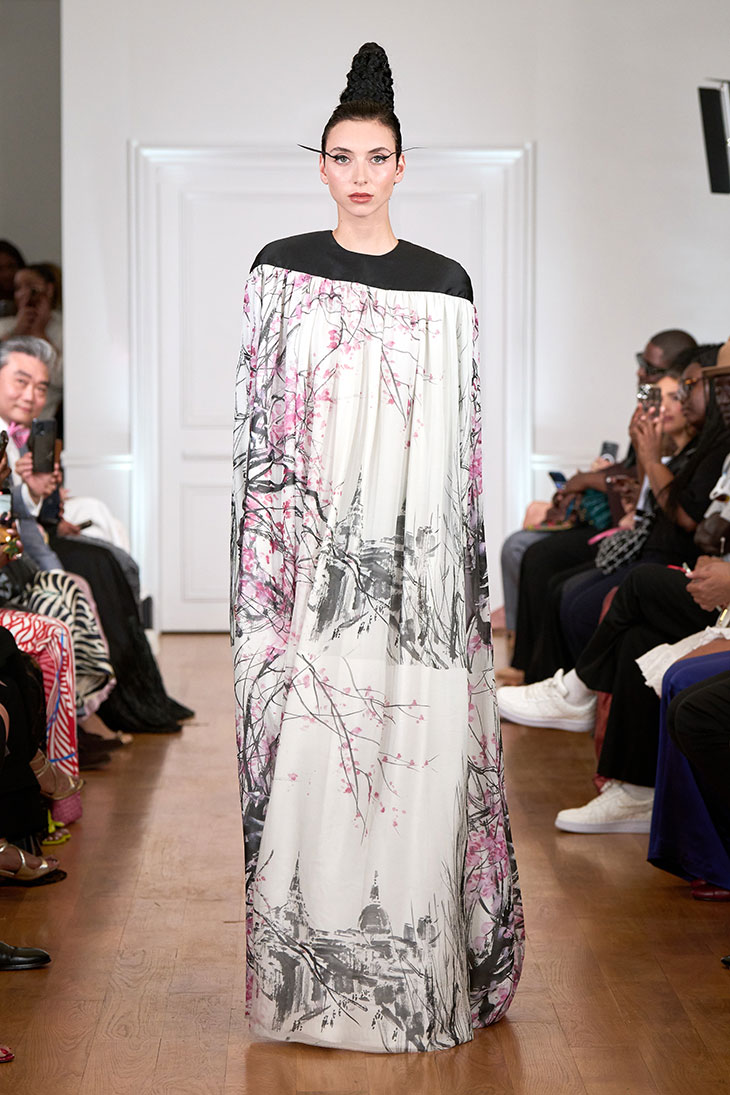
Fashion is a powerful form of self-expression, and it’s natural to be inspired by the rich styles and traditions of different cultures and historical periods. From the intricate patterns of Indigenous textiles to the vibrant colors of African prints, and the elegant silhouettes of traditional Asian attire, these looks can be truly captivating. However, while it’s exciting to incorporate elements from diverse cultures into your wardrobe, it’s important to approach this with respect and mindfulness.
Simply copying or wearing cultural garments without understanding their significance can unintentionally perpetuate stereotypes or cause offense. In this article, we’ll explore how to thoughtfully and respectfully embody cultural fashion in a way that honors the heritage behind the style.
What Cultures Have Styles People Often Want to Emulate?
Many cultures around the world have distinct fashion traditions that inspire admiration and influence personal style. These traditions often hold spiritual, ceremonial, or historical importance, so it’s crucial to approach them with awareness and care.
Irish/Celtic
One culture whose traditional styles frequently attract admiration is Irish and Celtic fashion. Rich with symbolism and history, Celtic fashion often features intricate knotwork, woven patterns, and garments made from wool and linen. The iconic Aran sweater, with its textured cable patterns, is a beloved example of Irish craftsmanship. Beyond clothing, Celtic designs are prominent in jewelry and accessories, often featuring spirals, crosses, and triskele motifs that hold cultural and spiritual meaning. Many people are drawn to these timeless designs for their beauty and connection to heritage, but it’s important to recognize their origins and the stories they tell, rather than treating them as mere aesthetic choices.
Japanese
Japanese clothing traditions such as the kimono, yukata, and hakama offer a refined visual language rooted in centuries of custom. Each style holds specific meaning based on occasion, formality, season, and the wearer’s social position. For example, furisode kimonos, with long sleeves, are typically worn by unmarried women for formal events, while yukata are more casual, often worn during summer festivals. Understanding these distinctions helps prevent misuse. Wearing a kimono-style robe without recognizing its significance risks flattening a culture into fashion shorthand.
African
Certain West African countries, including Ghana and Nigeria, have influenced global fashion with fabrics such as Kente and Ankara. These textiles often carry encoded messages, colors and patterns can represent status, lineage, or moral values. While Ankara has become widely worn beyond its origins, designers within West African communities continue to innovate with these textiles in ways that reinforce cultural identity. Supporting contemporary African designers, rather than reproductions without context, ensures that appreciation does not become appropriation.
Native American
Many Indigenous nations throughout North America have clothing traditions tied to ceremony, tribal identity, and community stories. Elements like beadwork, quillwork, and feather accessories are not generic or universal; they hold sacred meaning and are often restricted to specific roles or events. For example, the Plains war bonnet (often misused as a costume) is traditionally earned through acts of bravery and leadership. When non-Indigenous people wear such pieces without permission, it disregards the sovereignty and specificity of each nation’s traditions. Instead of mimicking sacred attire, one can support Indigenous designers who share fashion created for broader audiences.

How to Wear These Styles Respectfully
Embracing elements of cultural fashion can express curiosity, appreciation, and a desire to engage with global aesthetics, but it requires care, context, and accountability. The goal is not to adopt someone else’s identity, but to respect the meaning behind what you wear. These guidelines offer ways to incorporate cultural references thoughtfully, without crossing into appropriation.
1. Educate Yourself About the Culture and Its Significance
Before wearing something inspired by another culture, take time to understand what it represents. This goes beyond a quick internet search. Read about the culture’s history and clothing traditions from academic texts, cultural organizations, or firsthand voices such as designers, artists, or elders. For example, if you’re drawn to Irish or Celtic designs, research the meanings behind the intricate knotwork or the traditional significance of the Aran sweater.
If you’re admiring a piece with African print, ask: What region is it from? What does this pattern mean? If you’re drawn to Japanese design, learn how garments like yukata, haori, or obi are worn and what occasions they’re appropriate for. Knowledge shows respect, and it helps avoid missteps.
2. Support Authentic Artisans and Businesses
Whenever possible, purchase cultural clothing or accessories directly from artisans or businesses within that culture. This not only ensures you’re getting authentic, high-quality pieces but also supports the communities that keep these traditions alive. For instance, buying handwoven Irish wool garments from local Irish producers or purchasing African Ankara prints from African designers helps sustain cultural heritage and economies.
Avoid cheap, mass-produced imitations that often strip away meaning and exploit cultural designs without giving back to the communities they originate from.
3. Avoid Wearing Sacred or Ceremonial Items as Fashion
Many garments, accessories, and symbols are not meant for general use. Items such as the Plains war bonnet, Sámi gákti, or Maori tā moko are deeply spiritual or connected to specific rites of passage, ancestry, or tribal roles. Wearing them casually or for visual effect can be harmful. If you’re unsure whether something is ceremonial, don’t assume – it’s better to ask or avoid it entirely. Cultural identity is not a costume, and sacred regalia should be treated with reverence.
4. Blend Inspiration with Your Own Style Respectfully
If you want to engage with cultural fashion, look for everyday pieces, those designed for broad audiences by cultural insiders. For example, you might choose a piece of jewelry featuring Celtic knots or wear a scarf with traditional African patterns paired with contemporary clothing. Choose pieces that honor the origin without replicating full traditional dress. This approach allows you to celebrate cultural influences while maintaining your own identity and showing respect for the source.
5. Give Credit and Acknowledge Origins
When sharing your outfit on social media or in conversation, acknowledge the culture that inspired your look. Giving credit helps raise awareness and appreciation for the culture’s artistry and history. It also signals to others that you value cultural heritage and are mindful of its significance.
6. Listen and Be Open to Feedback
Finally, be open to learning from members of the culture you’re inspired by. If someone expresses discomfort or explains why a particular style might be inappropriate to wear, listen – don’t defend. Mistakes may happen, but how you respond matters. True respect means being willing to adjust your actions based on what those most affected have to say.

Ideas to Incorporate Cultural Fashion Into Your Looks
Cultural fashion can enrich personal style when approached with intention and awareness. Rather than mimicking full traditional outfits, consider subtle and respectful ways to draw influence – especially when the items come directly from cultural makers and carry shared meaning rather than ceremonial use. The following ideas offer low-risk entry points for engaging with cultural aesthetics thoughtfully.
Start with Jewelry and Accessories
Jewelry is one of the easiest and most meaningful ways to incorporate cultural fashion. Many cultures have distinctive jewelry styles that carry rich symbolism and craftsmanship. For example, Celtic accessories like rings featuring intricate knotwork designs are not only beautiful but also represent themes like eternity and interconnectedness. Wearing a Celtic-inspired ring or pendant can be a subtle nod to Irish heritage or simply an appreciation of the artistry behind the design.
Similarly, West African beaded jewelry, especially when purchased from local artisans, offers vibrant detail and supports traditional techniques. Native American silversmithing with turquoise and hand-stamped motifs reflects generations of craftsmanship. Always ensure these items come from Indigenous makers or authorized sellers.
Incorporate Patterns and Textiles
Another way to embrace cultural fashion is through textiles and patterns. For instance, you might wear a scarf, shawl, or wrap that features traditional prints like Japanese indigo dye patterns. These pieces can add depth and cultural richness to a simple outfit without overwhelming your look. For casual wear, a custom t-shirt co-designed with culture-based artists using permitted motifs (with clear attribution and fair compensation) offers a respectful, everyday option.
When wearing patterned textiles, consider pairing them with neutral or modern pieces to create a balanced outfit that highlights the cultural element thoughtfully. For example, a brightly patterned African print skirt paired with a simple white blouse allows the fabric to shine while keeping the overall look elegant.
Mix Traditional and Contemporary Pieces
Blending traditional cultural elements with contemporary fashion can create a stylish, respectful fusion. You might wear a modern dress with embroidery inspired by Mexican Otomi designs or a jacket featuring Japanese-inspired motifs. This approach shows appreciation for the culture while making the style accessible and personal.
Use Cultural Motifs in Subtle Ways
The most meaningful cultural fashion moments come through relationships, whether that means learning directly from a friend or artisan, traveling and purchasing locally, or following designers who speak about their work’s significance. When you engage through curiosity and humility rather than trend-chasing, the result is fashion that feels personal, considered, and ethical.
Images from Cultural Couture: Imane Ayissi Fall Winter 24 Couture Collection – see full article here.



















